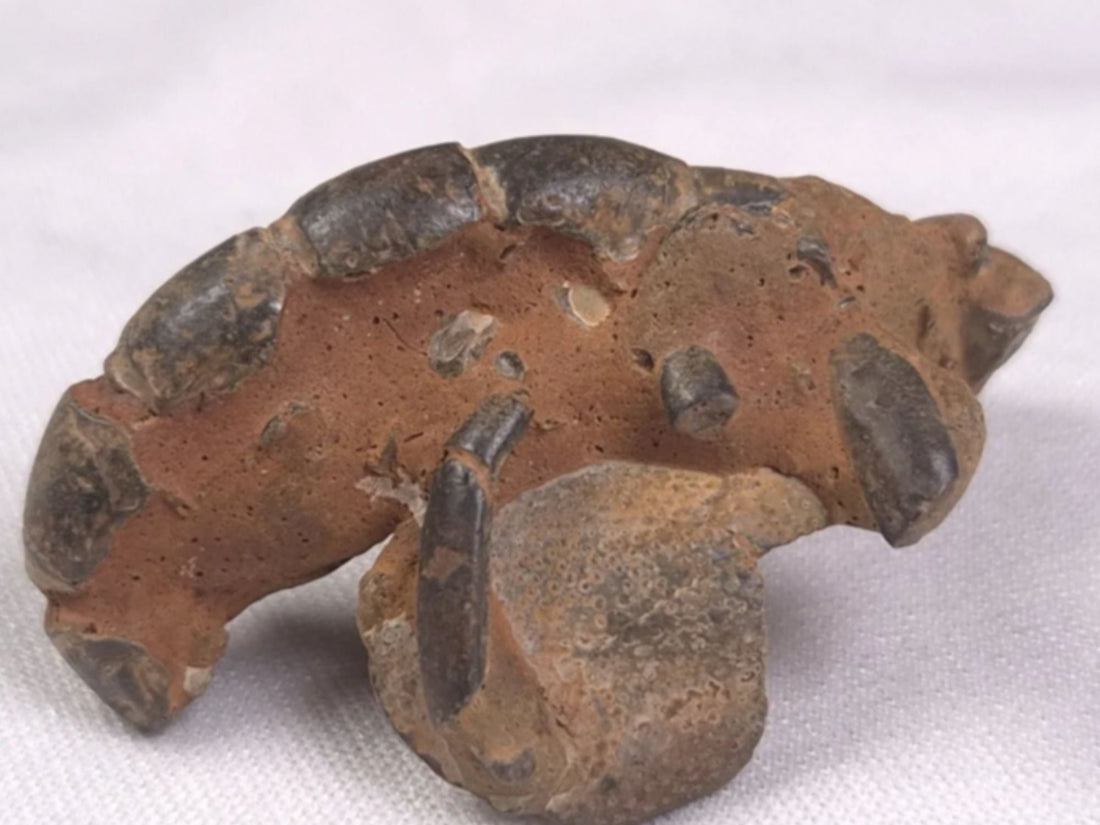
Unearthing the Fossilised Thalassina anomala of Gunn Point
Share
The Thalassina anomala (mud lobster) is a burrowing crustacean found in mangrove ecosystems across the Indo-Pacific region. Known for its unique ability to shape coastal landscapes with its intricate tunnel systems, this fascinating species plays an essential role in maintaining healthy estuarine environments. Fossilised remains of Thalassina anomala discovered at Gunn Point, Darwin, Northern Territory, offer valuable insights into ancient mangrove ecosystems and the paleoenvironment of the Holocene epoch.
Shop Fossilised Mud Lobster Here
Geological Context
The fossils found at Gunn Point date back to the Holocene epoch, which began approximately 11,700 years ago. The Holocene is characterised by significant climatic shifts that shaped coastal environments, influencing the distribution of species such as Thalassina anomala. Fossilised remains of this species are often preserved within calc-lutite concretions—solidified calcareous clay deposits that form protective enclosures around organic material over thousands of years. These concretions ensure remarkable preservation, providing researchers and collectors with well-defined specimens that reveal details of the crustacean’s morphology and environmental conditions.
Fossilisation Process
Mud lobsters are known for their burrowing behaviour, creating intricate networks beneath the mangrove forests. These tunnels not only aerate the soil but also facilitate nutrient cycling within their habitat. Over time, discarded exoskeletons from moulting events become embedded in mud and sediment layers. As geological processes unfold, mineralisation replaces the organic material with elements such as calcium carbonate, strontium, and iron. This transformation ensures the mud lobster’s remains are preserved as fossils, safeguarding a record of prehistoric mangrove ecosystems.
Coastal erosion and storm surges regularly expose fossil-bearing concretions along beaches and shorelines, making Gunn Point a valuable site for fossil discoveries. Many collectors and researchers have reported finding Thalassina anomala fossils scattered across the sandy shores, particularly after intense weather events.
Importance of the Discovery
The presence of Thalassina anomala fossils at Gunn Point provides crucial evidence of past environmental conditions in northern Australia. Mangrove ecosystems have long played a vital role in stabilising shorelines, supporting biodiversity, and serving as nurseries for countless marine species. Fossilised mud lobsters act as geological time capsules, offering scientists an opportunity to reconstruct the evolution of these coastal habitats.
In addition to their scientific significance, Thalassina anomala fossils hold aesthetic appeal among collectors. The distinctive concretions, often displaying fine details of the crustacean’s anatomy, make them sought-after specimens for fossil enthusiasts, museums, and academic institutions.
Conclusion
The discovery of Thalassina anomala fossils at Gunn Point, Darwin, enriches our understanding of prehistoric mangrove ecosystems and the intricate role of burrowing crustaceans in shaping coastal landscapes. By studying these fossils, researchers can piece together the environmental shifts that occurred throughout the Holocene, further highlighting the dynamic interplay between geology, climate, and biodiversity.
Shop Fossilised Mud Lobster Here
References: